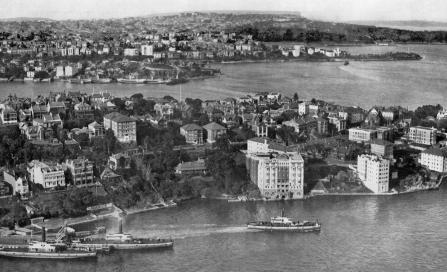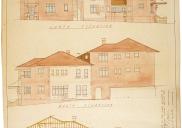|
|
||
|
FlatsFlats, also called units or apartments, have epitomised the best and worst aspects of modern urban life in Sydney for more than 100 years.North Sydney has been at the forefront of flat development since the first block was built in the area in 1908. Currently, it has one of the highest rates of flat occupancy in any local government area in Australia. In the early 1900s architects, planners and social commentators conceded the need for flats in urban areas but were mindful of the social problems associated with overcrowding in cities overseas. Working people, it was acknowledged, might need to live near their place of employment so ‘model tenements’ should be built for them. However, the preferred flat dweller was middle or upper class - people who were, by virtue of education or perhaps even breeding, immune to the immoral effects of close quarter living. This was the period in which the detached suburban house, which provided space, sunlight and access to nature via the garden, was held up as the ideal environment for Australian working class families. As late as 1960 North Sydney Council Alderman Dr Michael Fitzpatrick argued that flats deterred necessary population growth and, in the context of the Cold War, presented a vulnerable target for ‘atomic attack’ (Sydney Morning Herald, 24/2/1960). North Sydney’s first block, ‘Beulah Flats’, was built on the Kirribilli waterfront in 1908. Like the other early local flats, it catered for the well-to-do. Some of the apartments were as large as seven rooms. They featured electric lighting nearly a decade before that was generally available in North Sydney. 'Beulah Flats' also had two of the earliest lifts in Sydney, one for residents the other for trades and deliveries. In 1917 property investors were advised that the erection of ‘modern flat buildings’ in areas such as Cremorne and North Sydney was profitable. Such dwellings, when equipped ‘with every convenience’ were sought after by ‘the better class of tenant’. Over the next two decades, however, flat living was ‘democratised’ and North Sydney’s landscape was transformed by the construction of dozens of smaller two and three-storey ‘walk-up’ flat blocks. As well, many larger single family homes were converted into flats providing steady work for architects and builders such as JG Verrills. In the early 1930s there were fewer blocks completed because of the Depression. But as conditions improved by 1937 work picked up. In that year more than 60 building applications were received by Council for the construction of flats alone. In 1948 work was begun on the country’s largest flat development, the public housing complex called 'Greenway', in Milsons Point. When completed in 1962, 'Blues Point Tower' was the tallest residential block in Australia. Changes to technology and legislation had permitted flats to grow ever higher. The Height of Building Amendment Act of 1957 was a watershed that lifted the 150 foot restriction which had been in place since 1912. Very soon after, resident action groups were formed to oppose ‘hi-rise’ development and preserve the character of local precincts. Older, often historically significant, buildings were demolished across Kirribilli, Neutral Bay and Wollstonecraft to make way for towers or 'slab' developments. Council responded with codes that attempted to regulate the height and location of flats. However, the pressure for redevelopment was immense. Neither the 1960 Flat Code, or the 1965 amendment that followed, stopped the construction of tall buildings on the waterfront or in established residential areas. Despite their ongoing unpopularity with those who prefer low density development, flats are seen as an important part of the solution to the social and environmental problems created by suburban sprawl. The State Government’s Sydney Metropolitan Strategy (2005) required North Sydney Council to contribute 5,500 new dwellings by 2031. Council’s North Sydney Residential Development Strategy (2009) aims to meet the growing demand for ‘urban village living’, by providing more ‘1, 2 and 3 bedroom apartments’. The 2011 census showed that just over 25% of Sydney’s dwellings were apartments. Some argue that this will need to rise to 50% over the next 50 years if land and resources are to be used sustainably.
|
|






